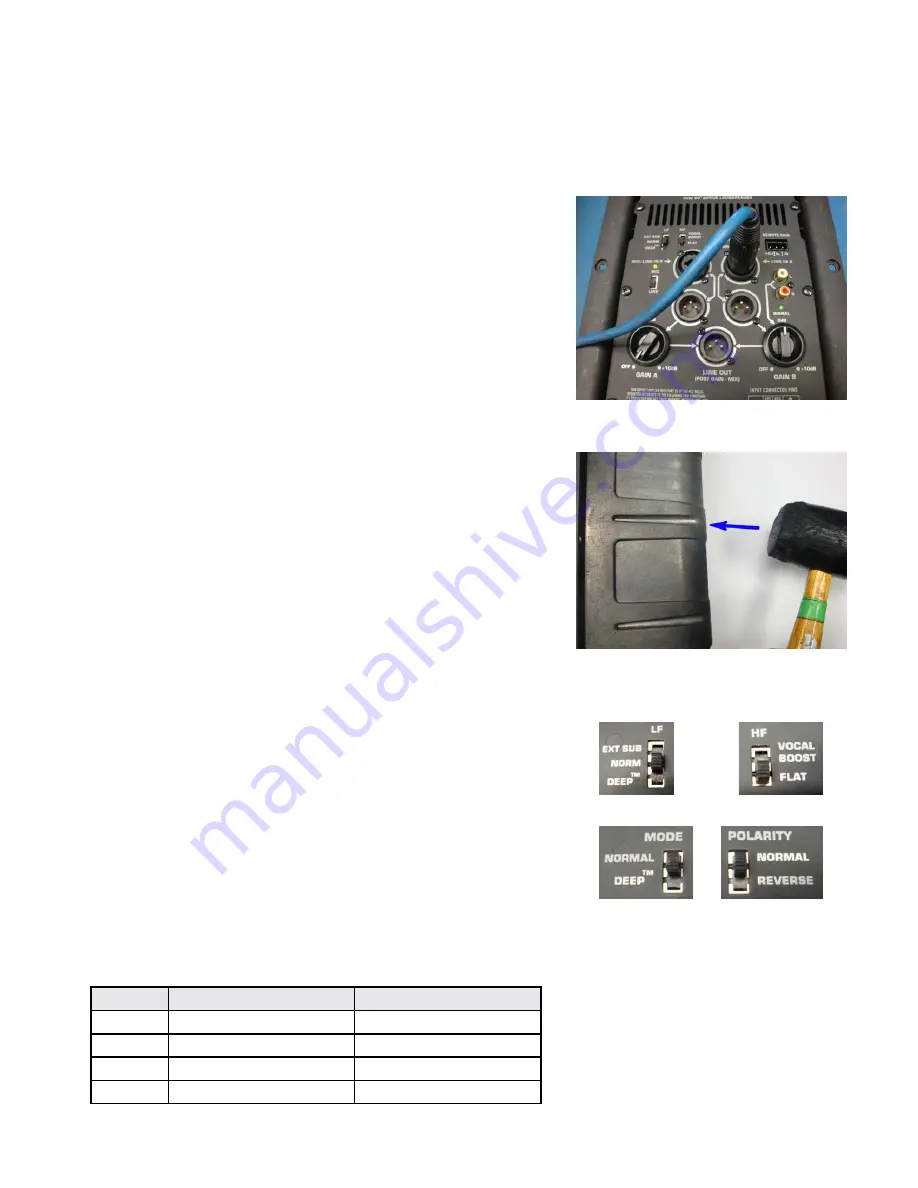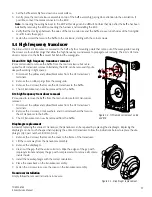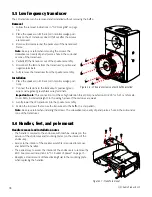
27
TD-000487-00
K Series Service Manual
Step 1: Power up sequence
This test is meant to verify the proper power up sequence. If the BOP’s standby or power LEDs continually blink during
power up, there may be an issue with the amplifier’s power supply or output section.
5. Disconnect all XLR, 1/4”, or RCA cables from the BOP. Connect a 120 or 230 V power source to the IEC inlet.
6. Turn on the power switch.
7. Monitor the BOP’s LEDs. The LIMIT, STBY, and/or POWER LEDs will blink
very quickly. The STBY LED will then illuminate for 1-2 seconds. Finally,
the POWER LED will turn on and stay illuminated.
Step 2: Shock test
The purpose of this test is to look for intermittent connections that may exist
within the BOP assemblies.
1. Apply AC power and turn the switch on.
2. Using a audio sine-wave generator, connect a balanced XLR or 1/4” TRS
cable to channel B’s input only. Turn the gain knob on the right side to
the 12 o’clock or 0 dB position.
3. If the test adapter is available, connect channel 1 and channel 2 to an
oscilloscope. If not, disregard.
4. Apply a 500 mVrms, 80 Hz sine wave signal. Verify channel 1 has a
signal on the oscilloscope.
5. Using a rubber mallet, lightly bang the back of the BOP a couple of times.
Verify that you don’t lose the signal on the oscilloscope. Verify that the
power is not lost. If a rubber mallet is not available, lightly bang the am-
plifier on the work bench.
6. Apply a 500 mVrms, 5 kHz sine wave signal. Verify channel 2 has a signal
on the oscilloscope. Repeat step 5 for channel 2.
7. Test complete.
Step 3: DSP functional test
These tests are meant to verify that the DSP controller and mode switches are
working correctly. Make sure that test mode is deactivated before performing
these steps. Please note that these tests are not meant to verify full DSP voicing
and are only quick checks.
1. Using a audio sine-wave generator, connect a balanced XLR or 1/4” TRS
cable to channel B’s input only. Turn the gain knob on the right side to the
12 o’clock or 0 dB position.
2. On KSub models set the mode to “NORMAL” and the polarity to “NORMAL”.
On K8/K10/K12 models set the LF to “NORMAL” and the HF to “FLAT”.
3. Apply AC power and turn the switch on.
4. Apply a 500 mVrms, 70 Hz sine wave signal. Using a digital multimeter
(DMM), verify the measurements in the table below. You may take the mea-
surements from the pins on the molex connector (or test adapter if you have
one).
Model
Ch1+/Ch1- Vrms @ 70 Hz
Ch2+/Ch2- Vrms @ 70 Hz
KSub
10—15 V
10—15 V
K8
15—20 V
0 V
K10
30—35 V
0 V
K12
30—35 V
0 V
Figure 8.5 - Shock test
Figure 8.4 - Input connection to Ch.B
Figure 8.6 - DSP function switches
Summary of Contents for K8
Page 2: ...2 QSC Audio Products LLC...
















































